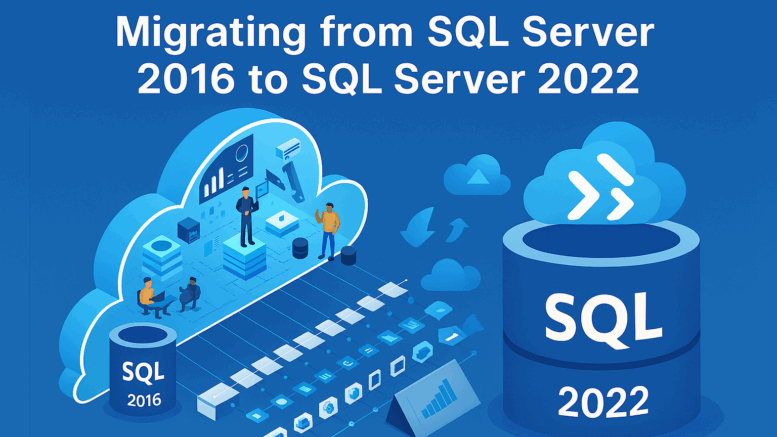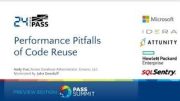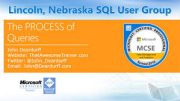Guidelines and Scripts for Migrating from SQL Server 2016
Recently I had a client who was wanting to migrate from SQL Server 2016 to SQL Server 2022. I documented the process and provided useful scripts to assist them on their project. I have provide that documentation and the scripts here.
Here is a zip file that contains the following documents:
- sql_migration_checklist.xlsx (List of prerequisites and migration task steps).
- sql_migration_scripts.sql
- sql_server_settings_documentation.sql
- SQL Server 2019 Features.docx
- SQL Server 2022 Features.docx
sql_migration_scripts.sql is a T-SQL script to support your migration:
- Backup All User Databases – Uses sp_MSforeachdb to back up all non-system databases.
- Restore from .bak Files – Template for restoring databases with file relocation.
- Script Out Logins – Generates CREATE LOGIN statements for user-defined logins.
- Script SQL Agent Jobs – Lists job metadata; full scripting recommended via SSMS.
- Check & Update Compatibility Levels – Sets all user databases to compatibility level 160.
sql_server_settings_documentation.sql is a script to document your environment:
- Server properties and configuration
- Trace flags and linked servers
- SQL Agent jobs, logins, and roles
- Database settings and file info
- Operators, alerts, endpoints, credentials
- Audit specifications and Resource Governor
Here is a list of SQL Server 2016 prerequisites for the SQL Server Migration process:
- SQL Server 2016 SP3 or later is installed
- Processor: x64, minimum 1.4 GHz (2.0 GHz recommended)
- Memory: Minimum 1 GB (4 GB or more recommended)
- Disk Space: Minimum 6 GB on system drive
- Operating System: Windows Server 2016 or later
- .NET Framework 4.7.2 is installed
- SQL Server Setup Components: ODBC Driver 17, OLE DB Driver
- Upgrade account has local admin rights
- Upgrade account has sysadmin privileges on SQL Server
- All system and user databases are backed up
- Antivirus/endpoint protection temporarily disabled
- Run Data Migration Assistant (DMA) for deprecated features
- Check compatibility level and deprecated syntax
- Review SSIS/SSRS/SSAS package compatibility
- Review new features in SQL Server 2022
- Open required ports: 443, 53, 9354, 445, 12000
- Firewall and NSG rules allow SQL traffic
- Perform test upgrade in non-production environment
- Validate application compatibility
- Compare performance against baseline
- Validate security configurations
- Enable Query Store for performance monitoring
Here is a high-level overview of the SQL Server Migration process:
Assessment and Planning
- Inventory and Compatibility Check: Use tools like SQL Server Data Migration Assistant (DMA) to assess your current environment for deprecated features, compatibility issues, and unsupported objects.
- Decide on Migration Type:
- In-place upgrade: Faster but riskier; leaves behind unused components.
- Side-by-side migration: Safer and cleaner; allows rollback and avoids legacy component clutter.
- Evaluate Application Dependencies: Ensure all applications are compatible with SQL Server 2022.
Pre-Migration Preparation
- Backups: Take full backups of all user and system databases (except TempDB).
- Performance Baseline: Capture performance metrics to compare post-migration behavior.
- Security Review: Audit logins, roles, and permissions. Plan for migration of SQL Server Agent jobs, linked servers, and SSIS packages if applicable.
- Clean Up: Remove unused features or components from SQL Server 2016 to reduce migration complexity.
Migration Execution
- Option A: In-Place Upgrade
- Run SQL Server 2022 setup and choose “Upgrade from a previous version.”
- Be aware: shared features and external packages may remain post-upgrade, potentially introducing security risks.
- Use tools like SCCM or PowerShell to identify and remove legacy components.
- Option B: Side-by-Side Migration
- Install SQL Server 2022 on a new server or VM.
- Use tools like:
- Backup/Restore
- Detach/Attach
- Log Shipping
- Database Mirroring
- Always On Availability Groups
- Migrate logins, jobs, and linked servers manually or with scripts.
Post-Migration Validation
- Functional Testing: Validate application connectivity and functionality.
- Performance Testing: Compare against baseline metrics.
- Security Testing: Confirm permissions and roles are intact.
- Cleanup: Remove deprecated components and validate that no legacy services are running.
Monitoring and Optimization
- Enable Query Store to monitor query performance regressions.
- Use Extended Events and Azure Monitor for ongoing diagnostics.
- Consider enabling features like Intelligent Query Processing and Accelerated Database Recovery in SQL Server 2022.





Be the first to comment on "SQL Server 2016 Migration Guidelines"